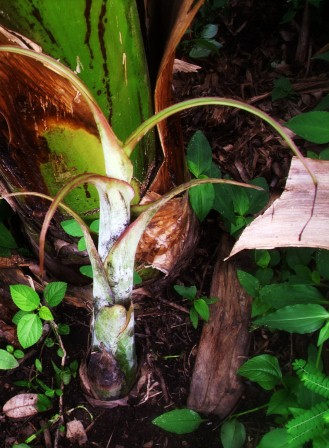Structure, Abundance, and Relative Frequency of Phytophagous Insects, Associated to Beans (Phaseolus vulgaris L.) at Two Different Sowing Times
Main Article Content
Resumen
Context: The implementation of a strategy of Integrated Pest Management is based on characterization of pests and crops, and the relationships existing between the two.
Objective: To determine the structure, abundance, and relative frequency of phytophagous insects associated to bean variety Bat-304.
Methods: Research took place on San Miguel Farm, Jaruco, Mayabeque, at two different sowing times: On September 5, 2015 (early), and February 18, 2016 (late). Overall, six samplings were made 15 days after sowing, at a weekly rate. Samples were collected from 15 plants at random, double diagonal, for which a leaf was taken from each level, (higher, middle, lower). The samples taken were analyzed at the Entomology Laboratory of the Faculty of Agronomy, Agrarian University of Havana, for quantification and identification of several species.
Results: The phytophagous insects detected were, Empoasca kraemeri Ross and Moore; Bemisia tabaci Gennadius; Liriomyza trifolii Burgess; Thrips palmi Karny; Diabrotica balteata Leconte and Cerotoma ruficornis Olivier.). T. palmi was very abundant during the two sowing times, whereas L. trifolii was not as abundant in either time. E. kraemeri and B. tabaco were variably abundant at each sowing time.
Conclusions: Phytophagous insects kraemeri; B. tabaci; L. trifolii, and T. palmi, were very abundant at the two sowing times. A greater biological diversity was observed in sowing time 1 (early), whereas dominance was higher during sowing time 2 (late).
Descargas
Resumen
Context: The implementation of a strategy of Integrated Pest Management is based on characterization of pests and crops, and the relationships existing between the two.
Objective: To determine the structure, abundance, and relative frequency of phytophagous insects associated to bean variety Bat-304.
Methods: Research took place on San Miguel Farm, Jaruco, Mayabeque, at two different sowing times: On September 5, 2015 (early), and February 18, 2016 (late). Overall, six samplings were made 15 days after sowing, at a weekly rate. Samples were collected from 15 plants at random, double diagonal, for which a leaf was taken from each level, (higher, middle, lower). The samples taken were analyzed at the Entomology Laboratory of the Faculty of Agronomy, Agrarian University of Havana, for quantification and identification of several species.
Results: The phytophagous insects detected were, Empoasca kraemeri Ross and Moore; Bemisia tabaci Gennadius; Liriomyza trifolii Burgess; Thrips palmi Karny; Diabrotica balteata Leconte and Cerotoma ruficornis Olivier.). T. palmi was very abundant during the two sowing times, whereas L. trifolii was not as abundant in either time. E. kraemeri and B. tabaco were variably abundant at each sowing time.
Conclusions: Phytophagous insects kraemeri; B. tabaci; L. trifolii, and T. palmi, were very abundant at the two sowing times. A greater biological diversity was observed in sowing time 1 (early), whereas dominance was higher during sowing time 2 (late).
Article Details

Esta obra está bajo licencia internacional Creative Commons Reconocimiento-NoComercial-SinObrasDerivadas 4.0.
Derechos de autor 2018
Copyright ©Agrisost/ (CC BY-NC-SA 4.0)

Esta obra está bajo licencia internacional
Creative Commons Reconocimiento-NoComercial-SinObrasDerivadas 4.0

